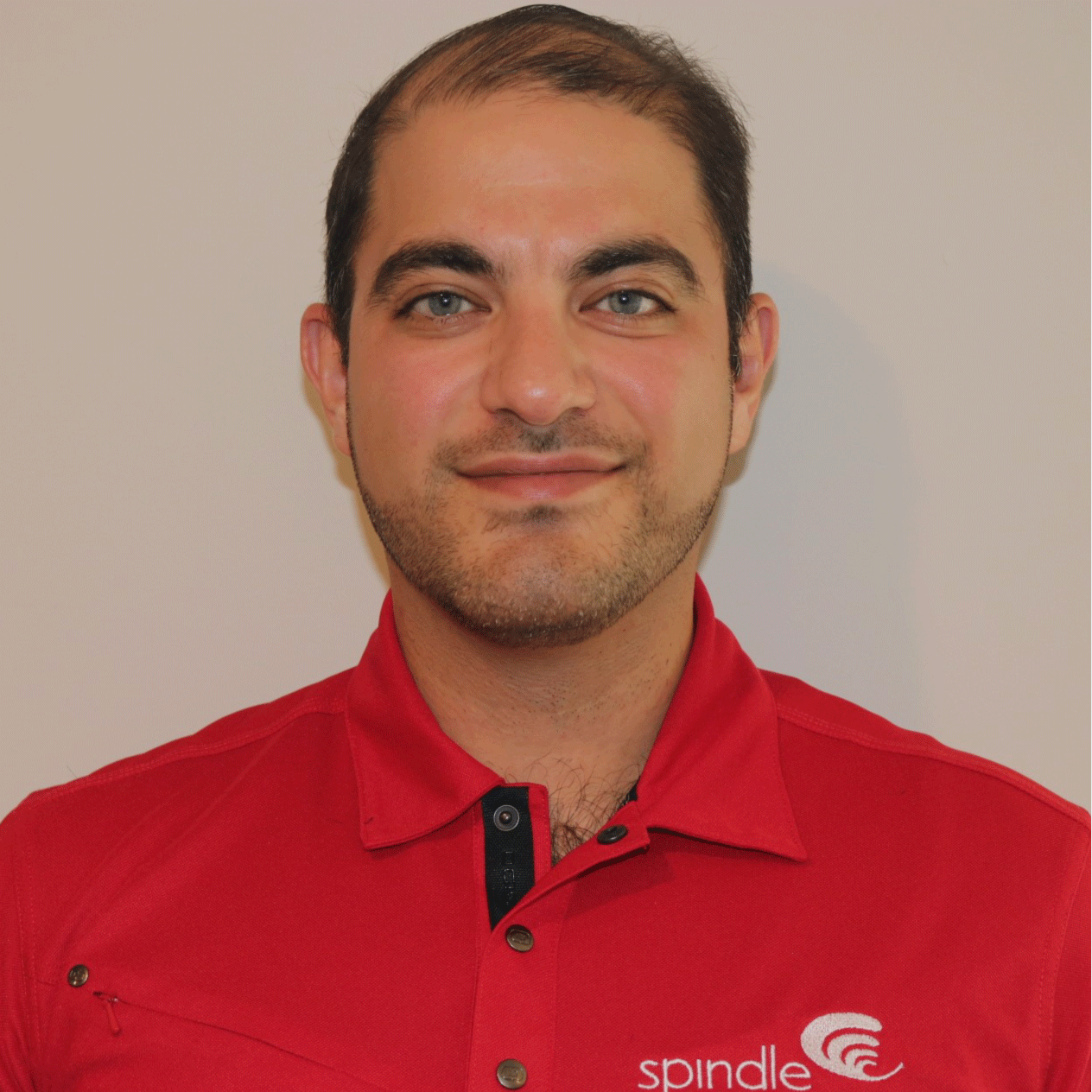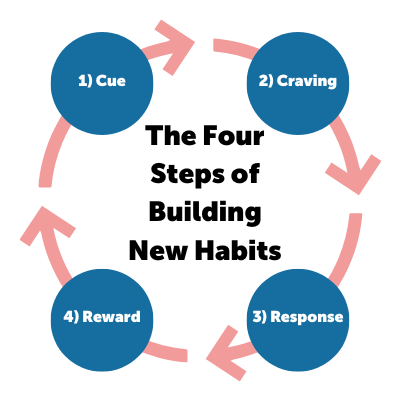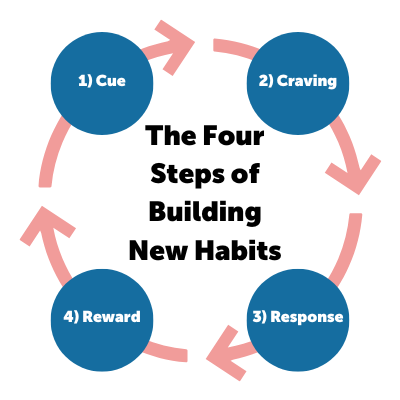The Art of Motivating Your Commercial Laundry Employees


We sometimes think about building good habits in an abstract way … but the road to good habits actually follows four distinct, easy-to-understand steps.
Motivation is the hidden force behind most things in life.
When we’re motivated, there’s often no limit to what we can do. Conversely, when we’re unmotivated – we’ve all been there at some point in our lives – everything can feel like a painful slog.
For an employee in a commercial laundry plant, that could manifest like so: Why should I up my productivity? I’m already working pretty hard and, besides, even if I did, I wouldn’t get anything out of it. My manager won’t notice and I won’t get a bonus. What’s the point? I’ll keep doing just enough.
But motivation doesn’t have to be something that comes and goes with the breeze: it can be honed intentionally. If you’re the aforementioned employee’s manager, your job is to make sure they see the point.
As a manager or supervisor, this is easier to do than you might think … if you know what you’re looking for.
That means not just being an overseer of productivity numbers and delivering admonishments for unsatisfactory results: it means being a positive nurturer of strong habits, which are the things you do consistently over time.
Putting in the Work … Again and Again
In the commercial laundry space, you can have dozens of employees at a plant, each tasked with a specific duty. There are a variety of factors that can impact an employee's productivity on any given day, including challenges in their personal life. Even the most self-motivated employee won’t operate at peak efficiency all of the time.
As a manager, your goal should be to smooth over those motivational peaks and valleys. If you’re collecting data, you’re already armed with a wealth of information to help you identify who is doing a good job and who might need a so-called “coaching moment.”
Eventually, though, when a person develops a good habit, that activity goes on autopilot. Think of it like a golf swing, for example. Once you’ve achieved a certain level of practice hours and refinement of technique, you just go out there and do, without even really thinking about it.
Just as in golf, though, mind games can wreak havoc.
So, when we talk habits, it’s important to understand that they start right there: in the mind.
The book “Atomic Habits” by James Clear lays out this idea neatly, like a freshly washed and pressed batch of garments or towels.
The Four Stages of Habit Building
As Clear explains, habit building happens in essentially four stages: cue, craving, response and reward. When this cycle is repeated enough times, it results in a new habit. In this case, commercial laundry managers are looking for increased productivity, meaning the habit is an employee more frequently striving to improve their productivity numbers.
Let’s take a look at each of these categories before summarizing what it all means for you and your plant on a day-to-day basis.
Cue
A cue is a trigger that pushes you toward a certain action. At Spindle, we’ve found that having visual cues in the workplace can help increase worker productivity by 5-10%. As Clear explains in his book, cues can be based on time, location, preceding events, other people and even emotional state.
Craving
Cravings, meanwhile, are “the motivational force behind every habit,” Clear explains. As an example, say you’re an employee who enjoys a healthy work environment with a supportive manager. This employee comes into work happy knowing they’re walking into a supportive environment. That happy emotional state triggers a craving to do their work and keep their productivity numbers up.
Response
 The response is the follow-up to the craving. For example, you crave the feeling of doing good work at your job and getting positive feedback from your manager, so you follow through and get things done. A day-to-day life example might be waking up in the morning, craving the alertness you get from a cup of coffee and then drinking it.
The response is the follow-up to the craving. For example, you crave the feeling of doing good work at your job and getting positive feedback from your manager, so you follow through and get things done. A day-to-day life example might be waking up in the morning, craving the alertness you get from a cup of coffee and then drinking it.
Reward
Lastly – and this one is very important – we have both the concluding event of this cycle and the bridge to the cycle starting anew: the reward.
When this process is capped with a reward, it further incentivizes the individual to associate this series of thoughts, feelings and motivations with said reward. A reward can come in many different forms, but a few examples could be:
- Positive affirmation from your supervisor (“Hey, great job on your numbers this week. Your dedication hasn’t gone unnoticed. Keep it up.”)
- Extra days off for consistently exemplary performance
- Bonus pay via an incentives program
On the last point, while implementing a bonus scheme at your plant might seem like an additional cost, the benefits of increased employee retention and higher productivity across the board can outweigh those expenditures. As a matter of fact, it’s better to refer to those incentives as “investments” rather than expenditures, because you’re investing in good habits and employees who stay, in the long term.
Win the Game
What does all of that mean for your commercial laundry plant? Let’s look to the world of sports.
Players respond to different types of coaches and coaching philosophies. Some respond to tough love, while others need a gentler approach. At the end of the day, it’s about finding the best way to motivate their players.
In the commercial laundry plant, as a manager (i.e., coach), it’s your job to get the most out of your players (i.e., employees). If you can do that, you’ll foster a better working environment by giving them the tools they need to succeed.
Even further, it’s critical to understand your employees as people. By fostering a strong culture and an environment of positive affirmation, you lay the groundwork for the development of good work habits. With that said, it’s important to reiterate the importance of a reward – even if it’s not financial, consistent positive feedback for good work is critical. Plant supervisors and managers are the coaching staff of the plant operation, and each can have a positive or negative impact on their employees.
By thinking about your employees as people and backing up their good work with positive affirmation, you help build habits. In turn, you help improve retention, boost productivity and support the bottom line.
That, in a nutshell, is how you win the game.
[This article was originally published in CSC Network News' Q1 2025 issue.]
---
Interested in learning more about the subject? Download our e-book for more thoughts and tips on the subject of employee engagement in commercial laundries.

